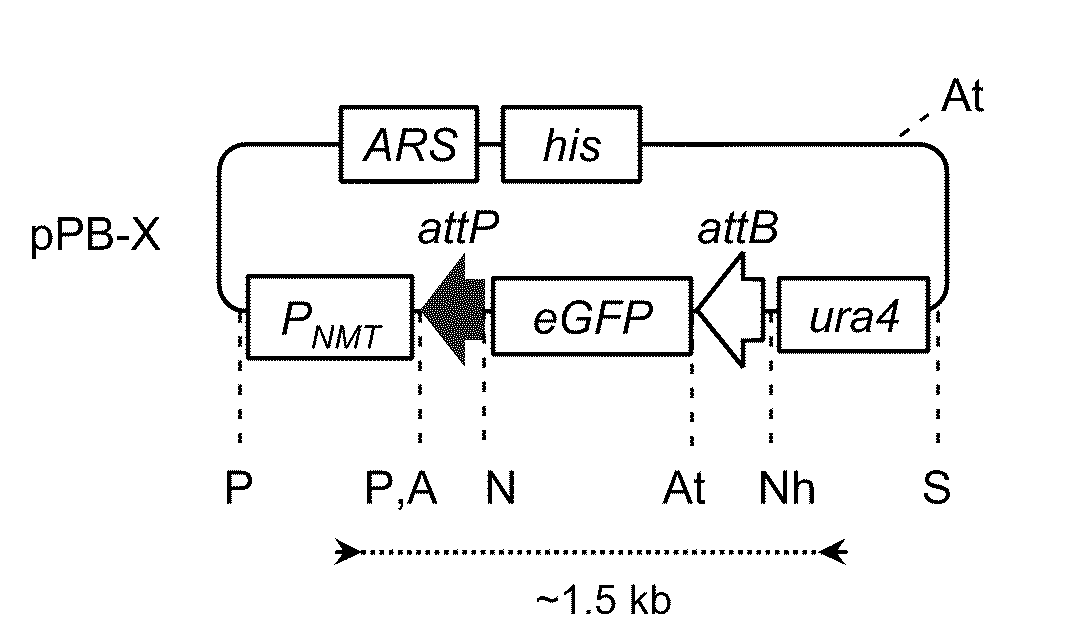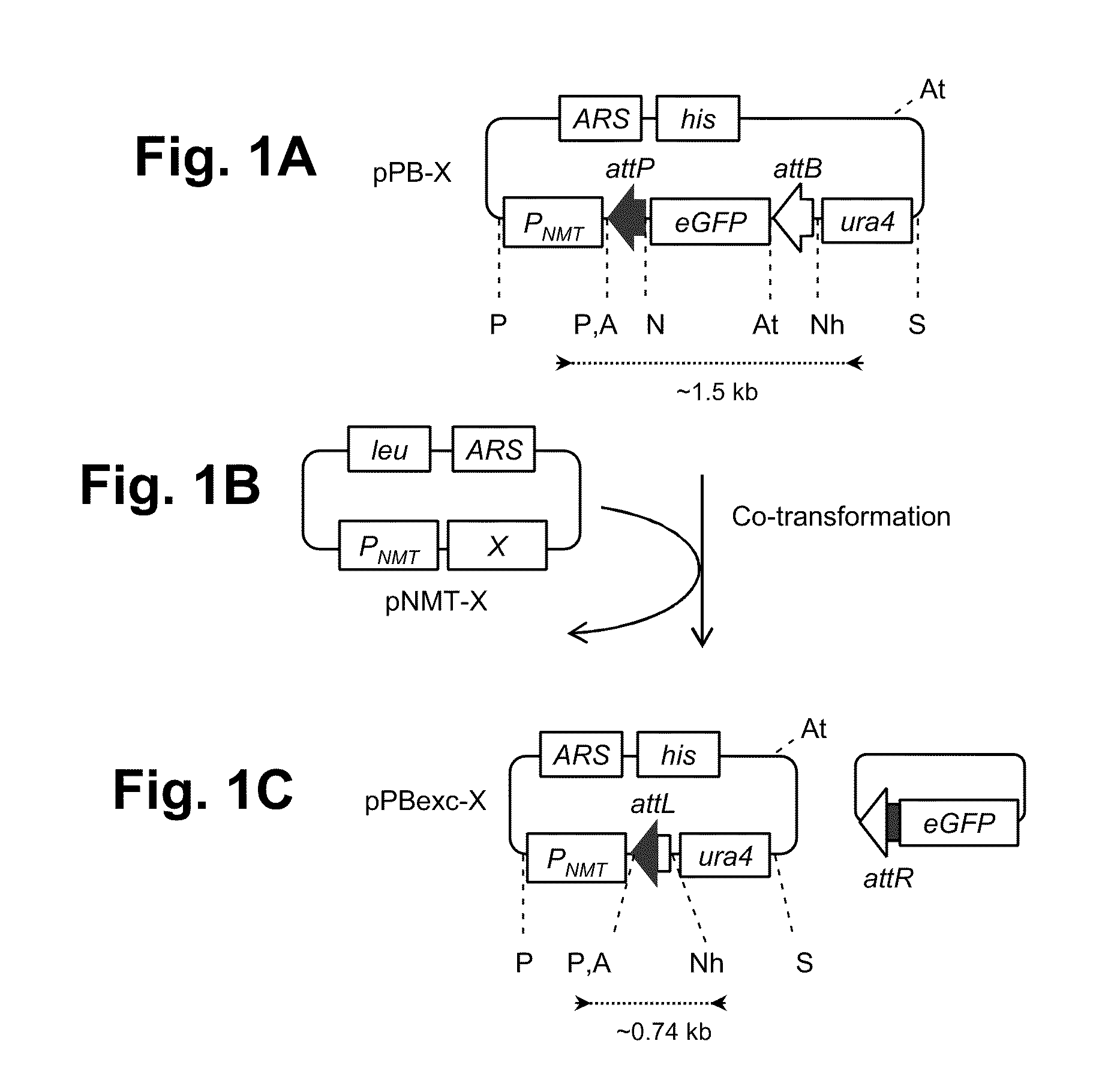Site-specific recombination systems for use in eukaryotic cells
a recombination system and eukaryotic cell technology, applied in the field of manipulation of eukaryotic genomes, to achieve the effect of lessening the probability of unintended recombination
- Summary
- Abstract
- Description
- Claims
- Application Information
AI Technical Summary
Benefits of technology
Problems solved by technology
Method used
Image
Examples
Embodiment Construction
[0148]The present invention provides methods for obtaining site-specific recombination in eukaryotic cells. Unlike previously known systems for obtaining site-specific recombination in eukaryotes, these recombination systems use different recombination proteins (recombinases) and different recombination sites.
[0149]The methods involve contacting a pair of recombination sites (e.g., attB and attP) that are present in a eukaryotic cell with a corresponding recombinase. The recombinase then mediates recombination between the recombination sites. Depending upon the relative locations of the two recombination sites, any one of a number of events can occur as a result of the recombination. For example, if the two recombination sites are present on different nucleic acid molecules, the recombination can result in integration of one nucleic acid molecule into a second molecule. Thus, one can obtain integration of a plasmid that contains one recombination site into a eukaryotic cell chromoso...
PUM
| Property | Measurement | Unit |
|---|---|---|
| molar ratio | aaaaa | aaaaa |
| resistance | aaaaa | aaaaa |
| antibiotic-resistance | aaaaa | aaaaa |
Abstract
Description
Claims
Application Information
 Login to View More
Login to View More - R&D
- Intellectual Property
- Life Sciences
- Materials
- Tech Scout
- Unparalleled Data Quality
- Higher Quality Content
- 60% Fewer Hallucinations
Browse by: Latest US Patents, China's latest patents, Technical Efficacy Thesaurus, Application Domain, Technology Topic, Popular Technical Reports.
© 2025 PatSnap. All rights reserved.Legal|Privacy policy|Modern Slavery Act Transparency Statement|Sitemap|About US| Contact US: help@patsnap.com



